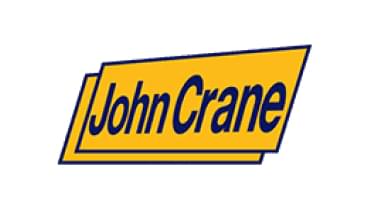John Crane
John Crane manufactured asbestos products, including gaskets and packing, which workers claim caused them to develop mesothelioma and other asbestos-related diseases. The company continues to face asbestos lawsuits from former employees and trade workers.

John Crane’s History With Asbestos
John Crane used asbestos in many of its sealing products, which fueled the company’s rise as it expanded worldwide. Founded in 1917 as the Crane Packing Company in Chicago, it grew into a global manufacturer with more than 6,500 employees at 19 sites in more than 50 countries.
Many of the company’s early products, including the first automotive mechanical seal in 1939 and other seals for rotating equipment, contained asbestos in gaskets and packing materials. These products were widely used in the oil, gas, chemical, mining, paper and pulp industries, exposing workers to asbestos fibers over decades. Asbestos is the primary cause of mesothelioma cancer.
Unlike many asbestos companies, John Crane hasn’t filed for bankruptcy. It continues to fight asbestos lawsuits through the courts under a strict “no-settle-regardless-of-merits” policy.

Gain access to trust funds, grants and other forms of compensation for you or your loved ones.
Get Help NowJohn Crane’s Asbestos Products
John Crane produced industrial packing, gaskets and yarn that contained asbestos. Factory workers and maintenance crews handling pumps, valves, and rotating equipment in oil, chemical, and other high-heat industrial settings were exposed to airborne fibers.
Products Containing Asbestos
- Chemlon braided packing
- Chemlon cup and cone ring packing
- Chemlon molded packing
- Gaskets
- Hydraulic packing
- Rope packing
- Yarn
Some of these asbestos products contained as much as 80% asbestos. The company used 2 types of asbestos: white chrysotile asbestos and blue crocidolite asbestos.
Occupations at Risk of Exposure to John Crane’s Asbestos Products
John Crane’s products were common in many industries, exposing workers to asbestos beyond just those at John Crane factories. For example, workers who replaced valves and gaskets often had to remove pipe insulation that may have contained asbestos, putting them at risk.
Jobs at Higher Asbestos Exposure Risk
A 2022 European Commission report showed that more than 70,000 workers died in 2019 from past asbestos exposure. Asbestos inhalation often occurred during cleaning and scraping of asbestos parts during regular maintenance. Workers in tight, poorly ventilated places like ship compartments and auto garages were especially at risk because of limited airflow.
Asbestos Litigation Involving John Crane
John Crane remains a frequent defendant in mesothelioma lawsuits. People who worked in the company’s factories or handled its asbestos-containing packing, gaskets and seals have filed lawsuits seeking mesothelioma compensation. The long latency of asbestos-related diseases means new cases continue to arise, even decades after exposure.
Notable John Crane Lawsuits
- $9.18 million: The family of John Bristow, a career shipyard worker, received this verdict award in Virginia after handling Crane gaskets and seals. John Crane was the only defendant, as all other companies named settled.
- $6.44 million: William Roverano, who developed mesothelioma after working with Crane asbestos products, received this award from a Philadelphia jury in 2016.
- $4.5 million: An Illinois panel upheld a verdict for the estate of Patrick O’Reilly in 2019. He was a former John Crane pipefitter from 1957 to 1985.
- $2.4 million: William Mansir, a U.S. Navy boiler room worker, was awarded this amount in 2011 for mesothelioma linked to Crane asbestos gaskets and pumps.
- $1.4 million: The estate of William Voelker, a U.S. Navy veteran, received this verdict in New York in 2015 after developing mesothelioma from exposure to Crane asbestos products.
- $1 million: In 2007, a California jury awarded Steven Pelley damages after he developed mesothelioma from Crane asbestos products, assigning 25% of fault to the company.
These cases show how John Crane asbestos products have affected people across multiple industries, including shipyards, the military and industrial facilities. They illustrate ongoing risks for anyone who worked directly with Crane packing, gaskets or seals.
Recommended Reading


